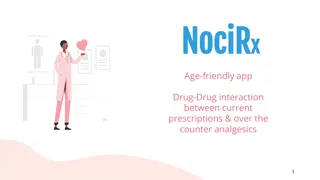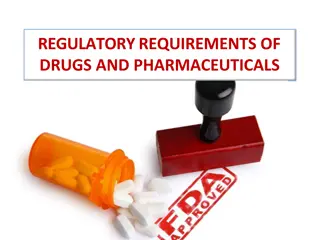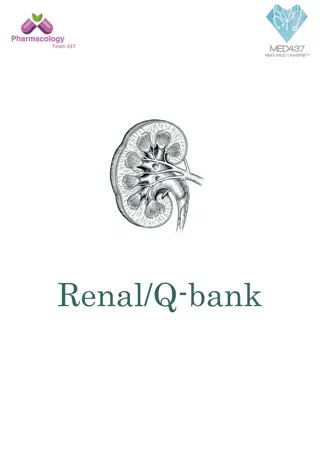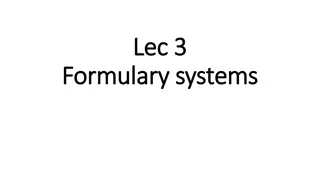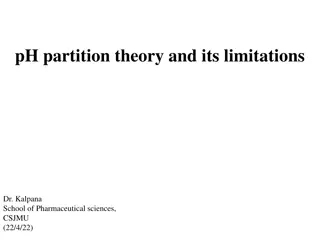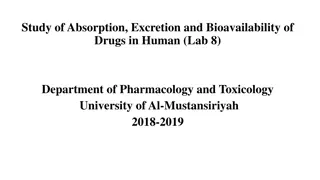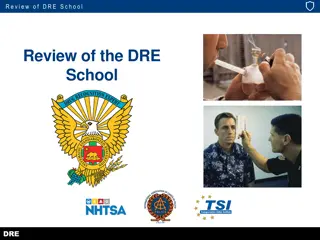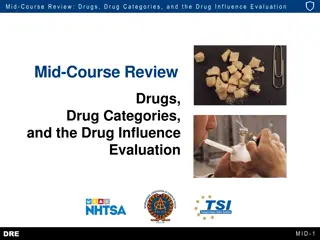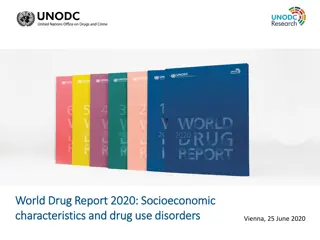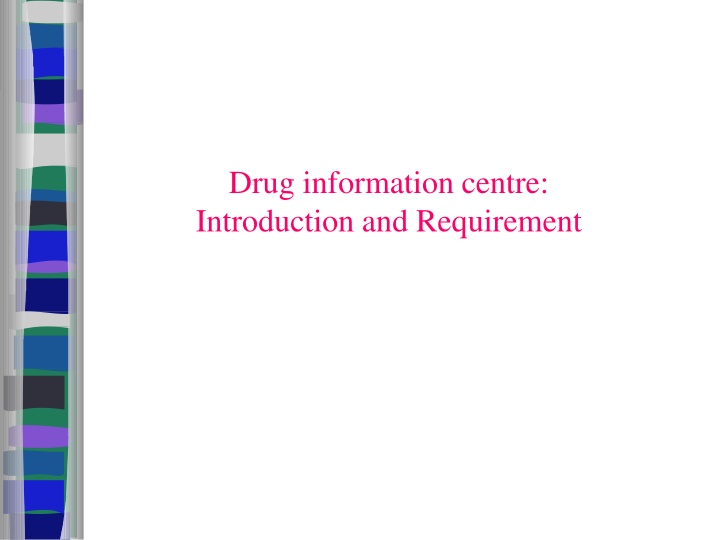
Role of Drug Information Centers in Healthcare Support
Drug Information Centers (DIC) play a vital role in providing information and advice on drug-related matters to healthcare professionals, organizations, patients, and the public. They aim to enhance patient care by offering services such as drug evaluation, therapeutic advice, and pharmacovigilance. Learn about the history, classification, staffing, and essential equipment required for DIC operations.
Download Presentation

Please find below an Image/Link to download the presentation.
The content on the website is provided AS IS for your information and personal use only. It may not be sold, licensed, or shared on other websites without obtaining consent from the author. If you encounter any issues during the download, it is possible that the publisher has removed the file from their server.
You are allowed to download the files provided on this website for personal or commercial use, subject to the condition that they are used lawfully. All files are the property of their respective owners.
The content on the website is provided AS IS for your information and personal use only. It may not be sold, licensed, or shared on other websites without obtaining consent from the author.
E N D
Presentation Transcript
Drug information centre: Introduction and Requirement
INTRODUCTION The main function of Drug Information Centres (DIC) is to provide written and / or verbal information or advice about any information related to drugs or its therapy to healthcare providers, organizations, committees, patients and to public in response to their request. Finally this will help better patient care by all means. WHO supports independent DIC`s as a core component of national programmes to promote better healthcare to all. 2
HISTORY 3
CLASSIFICATION OF DRUG INFORMATION CENTERS It can be mainly classified into three type s i.e. Hospital based DIC Industry based DIC Community based DIC 4
NEED OF DIC The primary function of a drug information centre is to respond to enquiries on therapeutic drug use. Most centers provide services to health professionals and some also offer a service to the public. In some cases toxicology information is also provided The various functions of drug information centre is as follows: DRUG EVALUATION THERAPEUTIC ADVICE PHARMACEUTICAL ADVICE EDUCATIONAND TRAINING DISSEMINATION OF INFORMATION RESEARCH PHARMACOVIGILANCE TOXICOLOGY 5
STAFFING Pharmacist; specialists with proper knowledge of drug and actions associated with it with academic degree. (they provide drug information) Pharmacy Technicians & Students (they assist pharmacists in providing drug information like literature searching,retrieval of data,resources updating etc) People trained in library science with computer knowledge (they are supporting staffs in DIC for their own expertise) 7
Basic equipment required for a center include Furniture - desks, chairs, shelving; Communications - telephones, facsimile, internet access; Computers - including external data backup, printer; Software - for word processing, spreadsheets, databases and presentations Photocopier; Textbooks and electronic information resources.
Managers responsibilities include Establishing and maintaining a viable financial base Staff recruitment and coordination Training promoting the service Identifying and maintaining appropriate resources Data management and reporting
THE SOURCES OF INFORMATION/RESOURCES AVAILABLE Primary Source: Information is presented by authors without any evaluation by a second party. Provides must current information about drugs. Examples; articles published in journals(eg British Medical Journal), thesis etc. Secondary source The original source has been evaluated by second party other than the publisher. Modified and rearranged form Examples; review articles like lexis-nexis, Medline etc 10
Tertiary sources: Information obtained from primary and secondary source and arranged in a manner to represent a composite of the available information. Examples; Representative form Pharmacopeias - BP, USP, IP, BNF etc., Encyclopedia Dictionaries Guides, text books Other Sources: The DIC also receives information from The public and hospitals about theAdverse effects of any drug Local drug lists National Formularies HospitalFormularies Internet Phone calls to Manufacturers Government and Non-government organizations and also to other DIC s. 11
CONCLUSION Pharmacists faced number of challenges when developing drug information systems. We should utilize existing resources to monitor drug use cost effectively. Future of clinical pharmacy and drug information system is very bright. Government and private hospitals should come forward to establish DIC and to provide patient focused services through efficient drug information centers. 15
REFERENCES https://www.slideshare.net/srkhere/drug-information-final https://www.google.co.in/search? q=drug+information+centre+ppt&espv=2&source=lnms&tbm=isch&sa=X&v ed=0ahUKEwj85N7OhpDTAhUEMo8KHaJAARgQ_AUIBigB&biw=1242& bih=602#tbm=isch&q=drug+information+centre&*&imgrc=mc5lOAfeQv241 M: http://www.srmuniv.ac.in/sites/default/files/downloads/drugs_and_poison_inf ormation.pdf 16

